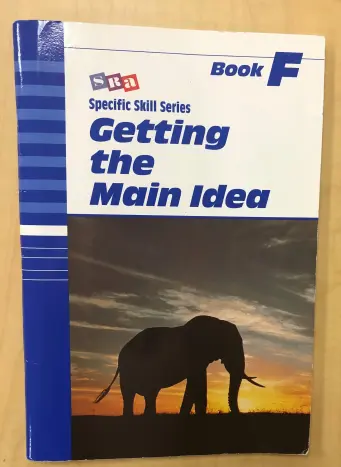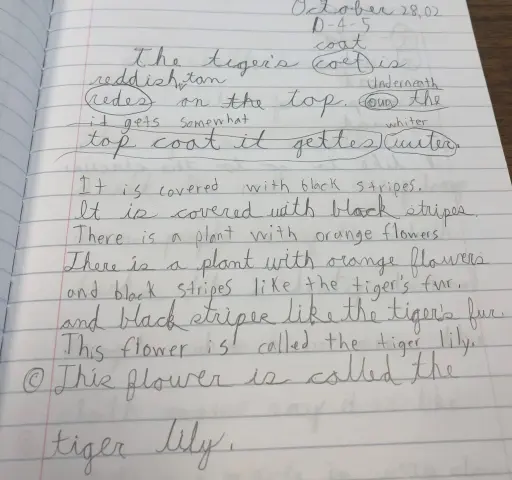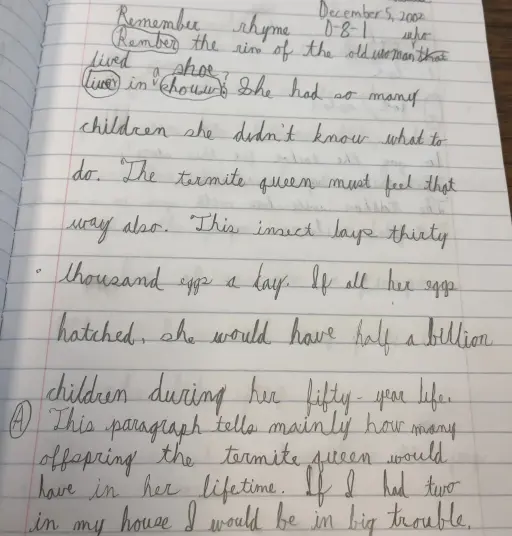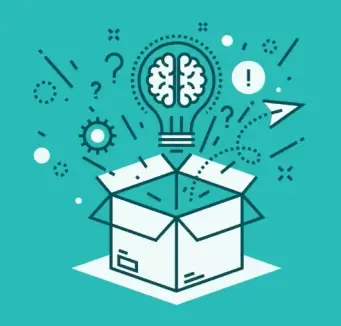
Written by: Cheryl Winget
December 9, 2019
In 1999, my family and I were living in central Europe, where my children were attending a Hungarian national school. In the afternoons, I supplemented their education by homeschooling in English. I was careful to seek out the best curricula for my children, and I voraciously read every good book or article on how to homeschool the ‘Third Culture Student.’ It was during this time that I was introduced to a book that revolutionized my thinking regarding homeschooling. I would actually say that it was among several treasured resources that were responsible for any success that my family experienced during our homeschooling years. This book—The Well-Trained Mind: A Guide to Classical Education at Home, by Susan Wise Bauer and Jessie Bauer, introduced me to an effective technique that resulted in multiple benefits for our children: Dictation and Copy.

This was also about the time that I became personally acquainted with NILD, as our son had recently received the diagnosis of ‘dyslexia’—a term that literally altered our family’s future. During my Level One NILD course, once again, I was intrigued by the qualities of Dictation and Copy. Through the years of giving NILD Educational Therapy to many young students, I have experienced first-hand these benefits. Further, as an NILD instructor, I have gleaned ideas and applications of the NILD Dictation and Copy technique from rising NILD educational therapists. Perhaps some of these will provide inspiration to you and your students. Before you read the balance of this blog, open your NILD manual for some review of the Dictation and Copy technique. Below are the listed goals and objectives.
Goal and Objectives
Visual
- To improve near-point copying
- To develop proofreading skills
- To develop long-term visual memory
Auditory
- To improve auditory memory
Cognitive
- To develop understanding of paragraph structure
- To improve reading comprehension and language processing
- To encourage application and transfer of spelling rules
The objectives for Dictation and Copy that are listed in the NILD manual include visual, auditory, and cognitive goals. These objectives are foundational to over-arching applications. Let’s dissect the components of Dictation and Copy.

We usually think that Dictation mainly fulfills the auditory objective of Dictation and Copy. The student hears the passage and holds it in his mind. However, so much more happens in the brain of the student as he encounters the text.
- Before listening, encourage the student to prepare mentally for taking in the passage. This might mean for the student to make the effort to physically sit still in order to focus on the task at hand actively. A preparation ‘check-list’ consisting of mnemonics is effective for students who struggle with attention. You can model it, and soon your student recites and internalizes it. For example: “What are our THREE Ps for Dictation? Posture. Pencil grip. Poised to listen.” After using this reminder on a regular basis, this check-list is apt to become automatic and hopefully transferable to other settings where preparation and attention are needed. The objective for this part of Dictation and Copy then becomes an Affective objective—one that affects behavior and (hopefully) motivation.
- Before dictating the passage, encourage the student to visualize the text as he listens. Ask him to ‘see’ particular words or word patterns as he listens. We would never interrupt the flow of the technique to ask what word patterns the student noticed during the input, elaboration, or the writing part of the output phase. However, checking for familiar words and word patterns at the end of the technique is a great part of the questioning aspect. Further, ask if the student can offer the Blue Book page that supports his grasp of correct spelling.
- While the primary objective of the dictation part of this technique is auditory—mental and physical proofreading is a visual objective. As the student hears the passage, he mentally proofreads and affirms or corrects spelling patterns that he visualizes. Additionally, as he hears the text repeated, his working memory is put into a complex gear. He must hold the auditory input as he visually scans his written work while he recalls the proper spelling and punctuation from long-term memory. This multifaceted workout of the brain builds efficient and sharpened thinking skills.

4. During the second phase of the dictation process, the prediction skills of the student can start to emerge. As he receives the second sentence, the student begins to assign meaning to the paragraph. This skill is developed by mediation provided by the NILD educational therapist during the questioning process after the text is written. Depending on the age of the student, sample questions are: “Can you predict what is going to happen next in this paragraph? Can you confidently name any of the ‘who, what, when, where, why, and how’ of this paragraph? If not, can you predict what any of those ‘W’s might be? Can you assess if this is a believable paragraph or a make-believe paragraph? How would you craft an ending to this paragraph?”
We usually think that Copy mainly fulfills the visual and cognitive objectives of Dictation and Copy. The student writes the passage as he sees it—transferring the text to his notebook. Again, there is so much more that can happen during the copy process, so are there more than the obvious objectives? According to Jessie Wise, “The purpose of copy work is to get into the child’s visual (and motor) memory the look and feel of a sentence that is correctly composed, and properly spelled, spaced, and punctuated. The purpose of dictation is to have a child practice transferring his knowledge of the rules of grammar, spelling, and punctuation to actual writing.”

- Since the main part of the copy stage of this technique is done for homework, it is the task of the NILD educational therapist to prepare the student to work independently. Before leaving this technique, ask/say, “After you copy the rest of the paragraph, what is your plan for proofreading that you copied correctly?”
- In order to build orthographic and lexical skills, ask the following questions: “Can you find at least three words in the paragraph that follow the same spelling pattern or are found on the same Blue Book page?” (This will take planning on the part of the NILD educational therapist!) “Please choose three words and write down a synonym for each.”
- In order to build critical thinking skills, as well as clarity and creativity, ask the following questions: “Can you write a sentence that tells what else you would like to learn about the subject of this paragraph? Where would you go to gather more information about this subject?” “How would you explain to another student how to have a good pencil grip? Let’s role play: Explain it to me using only your words!” I hope that you see that Dictation and Copy is an amazingly robust technique, one that is multifaceted.
In conclusion, here are some additional ideas regarding Dictation and Copy that are from some of my dear colleagues and students. I thought these were some fantastic applications of the technique that do not compromise the objectives of the technique. Here you go!
- After completing the Dictation and Copy technique, I have them read the entire paragraph out loud. I ask them 1-2 specific questions, and besides just answering the question (comprehension), they need to show me where the answer is in the paragraph (scanning). (Andrea Gál-International Christian School of Budapest)
- I worked with “Ryan” for two years doing language development. He was adopted from a 3rd world country when he was approximately 14-years old, but his family cannot be sure of his actual age as there were no records. He was around English language almost exclusively during those two years, but he really wasn't picking it up much. He could understand more than he could speak, but his processing skills (auditory, visual and cognitive) were very slow, and he probably had a lot of cognitive delays. They really couldn't be sure of what level he was working at or capable of because he wasn't strong enough in either language to test with reliability. He was on medication to control epilepsy which added to the slow processing. The gist of it was this: Given his immersion into the English language, he was not making typical progress learning the English language. As I tried a variety of activities with him to develop his receptive and expressive language, I noticed several things. First, he could name a fair amount of picture cards but really didn't have a deep understanding of the word. For example, if I showed him a picture of a glass of milk, he could name it correctly. However, when I asked where milk came from he didn't know. We would watch videos of someone milking a cow and then processing the milk and bottling it to help him develop a fuller understanding of the word. This was true of most words he could name. He also was only speaking in a word or a phrase, but not in sentences. He would often leave out many words that would make a complete sentence. He said things like "me go movie" instead of "I went to the movies." I used Dictation and Copy with him to help him understand how to write a full sentence. This developed SO many skills that he needed. Auditory attention and perception, short term memory, visual-graphic skills as well as fine motor skills. When I first started working with him, his writing was so large and shaky. It looked like a young child's attempts at writing. Dictation and Copy helped him learn to write within the lines and margins and to space words evenly. We worked on editing skills which bolstered his understanding of the mechanics of writing. It really encouraged him to see his progress. I would say it was a bit unconventional because I had to repeat sentences more than I would with another student and guide him through it more. We did see noticeable improvement, though. (Karen Pollard, International Christian School of Budapest)
- I have found that using math passages for Dictation and Copy is a perfect way to increase familiarity with math concepts and math vocabulary. I look for passages related to concepts that my students are learning in the classroom. I might create or find a great paragraph about types of angles, or how to find area and perimeter. I might choose a paragraph that just sparks curiosity about math, such as the rules for determining a leap year. By infusing my Dictation and Copy with math content, I can extend the benefits of this valuable technique! (Kari Bondar, Capital Christian School—Sacramento, California)

Taking the phrase with which Dr. Kathy Hopkins has challenged so many—let’s use our “I wonder” skills and think of ways to even more effectively use Dictation and Copy. Be creative, think outside of the box, and build those visual, auditory and cognitive skills—and beyond…Dictation and Copy!

Cheryl Winget, EdD
References
National Institute for Learning Development. (2017). Level I participant course manual (4th ed.). Suffolk, VA: NILD Instructional Team.